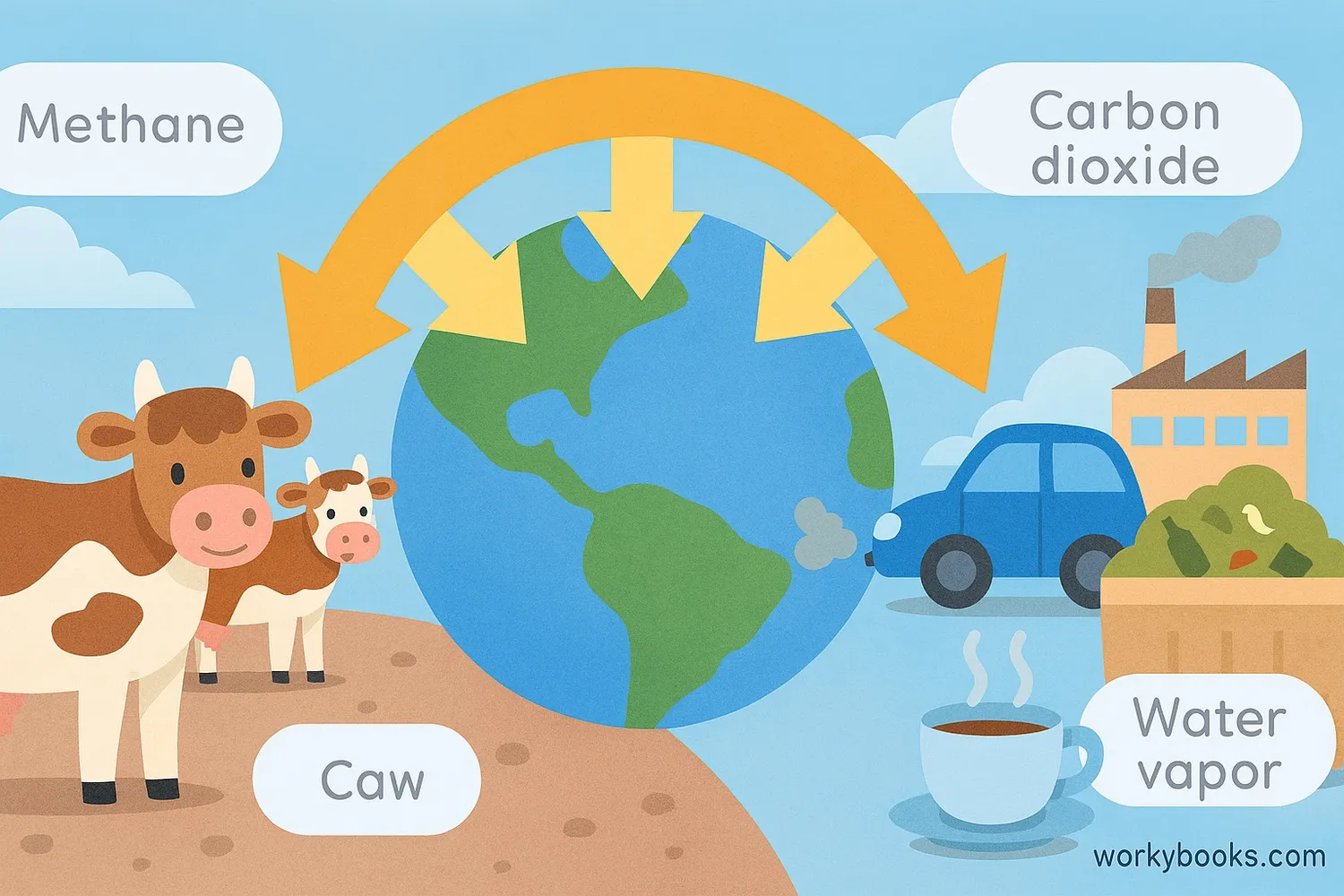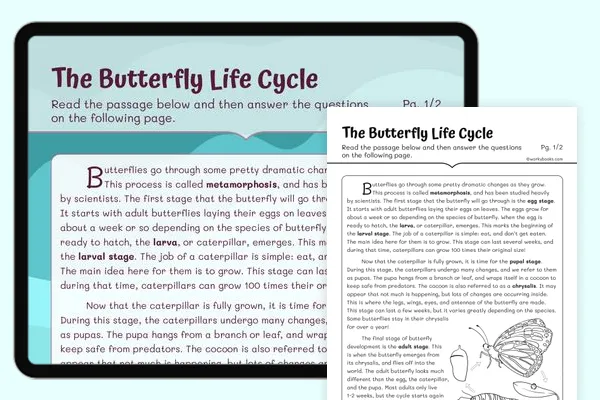Can you name three greenhouse gases? — Reading Comprehension
Grades
- 2
- 3
- 4
Standards
- RI.3.1
- RI.4.1
- 4.ESS2.D
PRINT+DIGITAL RESOURCE
This learning resource is available in interactive and printable formats. The interactive worksheet can be played online and assigned to students. The Printable PDF version can be downloaded and printed for completion by hand.
About This Reader
This passage introduces children to three common greenhouse gases: carbon dioxide (CO2), methane, and water vapor. It explains their sources, such as car emissions for CO2 and cow digestion for methane. The text uses the analogy of a blanket to describe how these gases trap heat in Earth's atmosphere. By relating these gases to everyday experiences like car exhaust and steam from tea, the passage makes the concept of greenhouse gases more accessible to young learners.
Perfect For:
👩🏫 Teachers
- • Reading comprehension practice
- • Auto-graded assessments
- • Literacy skill development
👨👩👧👦 Parents
- • Reading practice at home
- • Comprehension improvement
- • Educational reading time
🏠 Homeschoolers
- • Reading curriculum support
- • Independent reading practice
- • Progress monitoring
Reading Features:
📖
Reading Passage
Engaging fiction or nonfiction text
❓
Comprehension Quiz
Auto-graded questions
📊
Instant Feedback
Immediate results and scoring
📄
Printable Version
Download for offline reading
🔊
Read Aloud
Voice-over with word highlighting






















